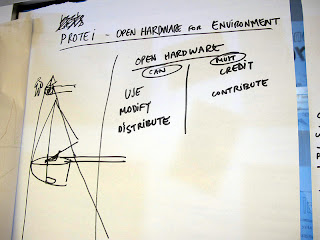With technology becoming ever cheaper and more powerful, a
movement to open hardware and increasing application in other disciplines, are
we heading for a continuous stream of biodiversity data?
The stage does seem to be set to make use of technological
advances. Three main elements may have contributed: 1) there is a well
established movement towards ecosystem and community level assessments at the
policy level; 2) there is an ever increasing need and gap for real time data to
make informed policy, planning and management decisions; and 3) governments and
monitoring authorities are predisposed to finding ever increasing ways to be
resource efficient.
This type of approach is beginning to be used for other
environmental data needs. One such project, currently looking for Kickstarter
funding to develop further, is the Smart Citizen1 project. The aim is that through cheap hardware, citizens
will deploy environmental monitoring devices across the globe. Collected data
will then be sent to online platforms for viewing, analysis and sharing.
Another project, which also received funding through the
Kickstarter platform, is the Protei2
sailing robot. Originally designed in response to the Gulf
of Mexico oil spill, the hope of the team behind it is application
in fisheries, natural reserve, coral reef and algal bloom monitoring.
Interestingly, both the Protei and Smart Citizen projects
have adopted an open hardware philosophy. Essentially meaning that anyone and
everyone has access to plans and detailed specifications for project hardware.
Facilitating others to view and innovate using existing advancements and
knowledge.
There have been developments in the area of biodiversity
citizen science. However these have relied on making human collection of data
more accessible to all citizens. Now and in the future we have a chance to
develop continuous data streams, helping us fill knowledge gaps and tackle some
of the biggest biodiversity challenges we all face.
Our team are currently working with partners on some of the
many elements needed to make this concept a reality. However, there is lots
still left to do, and we are always in talking to potential researchers and
organisations to collaborate with and help drive innovation.
1 (Smart Citizen) - http://www.kickstarter.com/projects/acrobotic/the-smart-citizen-kit-crowdsourced-environmental-m?ref=category
Photo
Under Creative Commons Licence - http://www.flickr.com/photos/gabriellalevine




